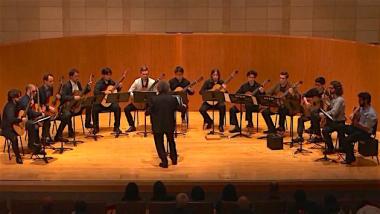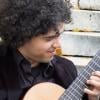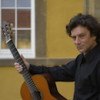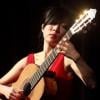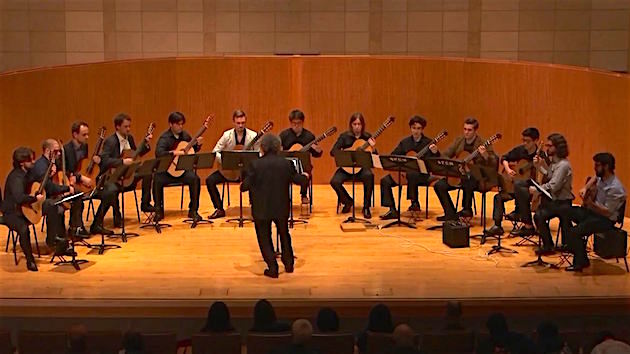
The San Francisco Conservatory of Music is celebrating its 100th anniversary with a remarkable series of concerts, and on Thursday it presented an evening dedicated to the fascinating compositions of Serbian-born Dušan Bogdanović, a former Conservatory faculty member now based in Switzerland, who has won international acclaim for his highly original music.
Bogdanović studied composition with Alberto Ginastera and has been profoundly influenced by Renaissance counterpoint, European classical music, American jazz, the ethnic music of a stunning array of world regions, and 20th-century modernism.
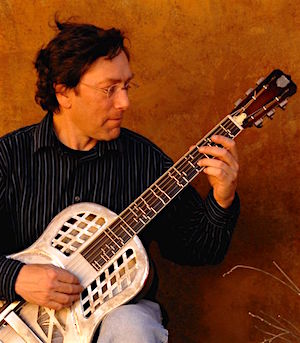
Village Music, dedicated to David Tanenbaum, was written for just-intonation National steel guitar, an instrument invented by composer Lou Harrison when writing his Scenes from Nek Chand for Tanenbaum. Bogdanović loved the sound of the instrument and wrote Village Music in response. The first movement features percussive harmonics which change pitch as the performer uses the tuning pegs to lower and raise the tension on the string involved. The second movement is a driving dance with rapidly changing meters, which builds excitement with the addition of counterpoint. Tanenbaum, an ideal interpreter of complex contemporary scores, reveled in the unusual and compelling colors offered by his beautiful and unique instrument.
The guitar duo Canticles was given a stunning performance by Michael Goldberg and Marc Teicholz. The first movement, marked Allegro trasparente, was always ethereal, delicate, and light, in a way that seemed too perfect for this world, first as a diaphanous chant and later as a spritely fairy dance. In the Adagio espressivo, Goldberg and Teicholz offered us a deeply moving and intimate conversation full of individual but coordinated coloristic effects and animated by complex polyrhythms. The concluding Allegro brilliante began with a rapid Balkan dance and evolved to include Stravinsky-inspired clashes.
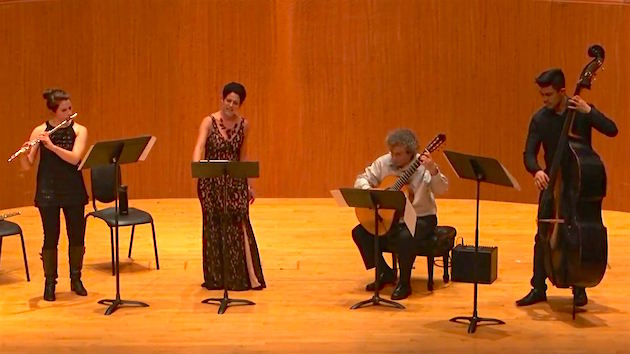
The high point of the evening was the performance of Bogdanović’s Crow, for soprano, flute, guitar, and double bass setting the poetry of Ted Hughes. Crow tells a story, in the language of mythology, about the mysterious creation of the world from nothing. The first movement, “Two Legends,” began with guitarist David Tanenbaum playing an ostinato which served as an accompaniment for soprano Ann Moss’s to sing about the darkness that surrounds us all and gives rise to life. The texture thickened, and the music became more intense as flutist Jessie Nucho took up the ostinato with gorgeous tone and absolute rhythmic control, Tanenbaum added an obbligato part and bassist Miles Tsue added drive and depth.
Moss then sang a biblically powerful genealogy, which told the source of Blood, Fear, Bone, Guitar, Adam, Mary, God, Nothing, and Crow. In the second movement, “How water began to play,” Moss sang a deeply expressive line, seeming to moan, as she told us how water wanted to live, went to the sun, trees, flowers, womb, but always came weeping back. Bogdanović wrote a beguiling, hypnotic accompaniment to the story, full of delicate guitar harmonics and bent pitches on the flute.
“Prelude to the Examination at the Womb-Door” was a lively flute and guitar duet illustrating the irrepressible force of new life. It paired with “Examination at the Womb-Door,” when Moss sang of vulnerable new life and its indomitable spirit, accompanied by a frenzied ensemble playing and shouting the word “death” in the style of a work by George Crumb. Finally, “Littleblood” was a mostly unaccompanied reflection on the entire cycle. All four musicians performed admirably, soprano Ann Moss was stunning. The work is undoubtedly a masterpiece.
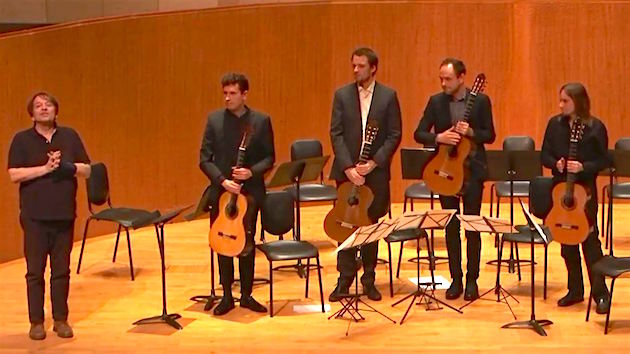
After intermission Lawrence Ferrara gave a soulful and spirited performance of Jazz Sonata, one of Bogdanović’s first pieces to receive wide international acclaim. Ferrara’s excellent performance captured both of the elements called for in the works title: the improvisatory idiom implied by jazz and the balance and attention to form implied by the designation as a sonata.
Naokolo (Around Dance), performed by the Conservatory Guitar Ensemble, vibrantly conducted by David Tanenbaum, proved an excellent addition to the repertoire of Slavic dances. The concert ended with Introduction and Dance for four guitars, a piece influenced by the music of the Arabic oud and a lively Balkan dance, both performed with great sensitivity and virtuosity by Dariusz Lampkoswki, Oskar Magnusson, Jakob Sonnek, and Wyatt Turner.

